 January 26, 2017 John E. Ross, KD8IDJ, Editor
| ||||||
Amateur Radio Parity Act Speeds to US House Passage, Heads to US Senate Just 10 days after being introduced in the 115th Congress, the 2017 Amateur Radio Parity Act legislation, H.R. 555, passed the US House of Representatives on unanimous consent under a suspension of House rules. The bill's language is identical to that of the 2015 measure, H.R. 1301, which won House approval late last summer after attracting 126 cosponsors, but failed to clear the US Senate last fall as the 114th Congress wound down. The new bill, again sponsored by Rep. Adam Kinzinger (R-IL), was launched on January 13 with initial cosponsorship by Rep. Joe Courtney (D-CT) and Rep. Greg Walden, W7EQI (R-OR), who chairs the influential House Committee on Energy and Commerce.
"We're very encouraged by the speed with which this bill made it through the House. It's amazing that this happened," said ARRL Hudson Division Director Mike Lisenco, N2YBB, who has been at the forefront of the legislative initiative. "With the help of ARRL members, we believe we can get this done," Lisenco continued. "We came within a hair's breadth last time, with [thousands of] e-mails to members of both houses of Congress, as well as letters and telephone calls. Member participation in this final push is critical." H.R. 555 calls on the FCC to establish rules prohibiting the application of deed restrictions that preclude Amateur Radio communications on their face or as applied. Deed restrictions would have to impose the minimum practicable restriction on Amateur Radio communications to accomplish the lawful purposes of homeowners associations seeking to enforce the restriction. New FCC Chairman Ajit Pai Praises House Action on H.R. 555, Other Telecoms Bills The FCC's new chairman, Ajit Pai, this week praised US House action on H.R. 555 and other telecommunications-related legislation that cleared the chamber the previous day. "I want to commend the US House of Representatives for passing a number of important, bipartisan telecom bills yesterday," Pai said on Tuesday. "These bills will help bring greater efficiency to the Commission, provide consumers with greater protections, improve rural call completion, help Amateur Radio operators, and take several steps to promote public safety," he continued, adding, "I look forward to working with Congress on these and other important issues as Chairman of the FCC."
President Donald Trump named the 44-year-old telecommunications attorney -- who has served on the Commission since 2012 and is its senior member -- to succeed Chairman Tom Wheeler, who stepped down on Inauguration Day, January 20. "I am deeply grateful to the President of the United States for designating me the 34th Chairman of the Federal Communications Commission," Pai said in a statement. "I look forward to working with the new administration, my colleagues at the Commission, members of Congress, and the American public to bring the benefits of the digital age to all Americans." A Republican, Pai was nominated to the FCC by former President Barack Obama and was confirmed unanimously by the US Senate in 2012. Pai has said the Commission needs to eliminate "outdated and unnecessary regulations," as he proposed in a December speech. "The regulatory underbrush at the FCC is thick," he said. "We need to fire up the weed whacker and remove those rules that are holding back investment, innovation, and job creation." Pai has said that he supports "the freedom to access lawful content, the freedom to use applications, the freedom to attach personal devices to the network, and the freedom to obtain service plan information."
The son of immigrants from India, the Harvard Law graduate and respected telecommunications attorney grew up in Parsons, Kansas. The FCC now is down to three members, so President Trump will have the opportunity to appoint two more. In addition to Pai are Democrat Mignon Clyburn and Republican Michael O'Rielly. The Commission can have five members, three of whom typically are from the majority political party. Before leaving office, former President Barack Obama renominated now-former FCC Commissioner Jessica Rosenworcel, a Democrat, for a new term. CEPT Meeting Makes Progress on WRC-19 Agenda Items Affecting Amateur Radio Progress was made regarding World Radiocommunication Conference 2019 (WRC-19) agenda items of interest to Amateur Radio when European Conference of Postal and Telecommunications Administrations (CEPT) Conference Preparatory Group Project Team D (PTD) held its second meeting January 10-12 in Helsinki, Finland. According to International Amateur Radio Union (IARU) Region 1 President Don Beattie, G3BJ, experts discussed WRC-19 Agenda Item 1.1, which proposes a 50-54 MHz allocation in Region 1 in order to create a global 6-meter band. Hans Blondeel Timmerman, PB2T, is the CEPT coordinator for this agenda item.
"IARU will continue to work on these studies with administrations and others to establish the optimum future sharing scenarios," Beattie said. Wireless Power Transmission/Transfer (WPT) was another item discussed, in preparation for WRC-19 Agenda Item 9.1.6. Studies would assess suitable harmonized frequency ranges to minimize the impact of WPT for electric vehicles on radiocommunication services. Various organizations are in the process of approving standards intended for global and regional harmonization of WPT technologies for electric vehicles.
At PTD, an IARU Region 1 paper on high-power wireless transfer technologies that argued for greater clarity in terminology and scope of studies to be undertaken was broadly welcomed. That document is expected to result in a CEPT contribution to ITU Working Party 1B, the committee charged with developing WPT spectrum allocation and related issues. A WRC-15 resolution had called for "urgent studies" in preparation for this agenda item. CEPT is one of the Region 1 telecommunications organizations with which IARU is actively participating, in advance of WRC-19. -- Thanks to IARU Region 1, CEPT, ITU, and Jon Siverling, WB3ERA The Doctor Will See You Now! "Meteor Scatter" is the topic of the latest (January 26) episode of the "ARRL The Doctor is In" podcast. Listen...and learn!
Every 2 weeks, your host, QST Editor-in-Chief Steve Ford, WB8IMY, and the Doctor himself, Joel Hallas, W1ZR, will discuss a broad range of technical topics. You can also e-mail your questions to doctor@arrl.org, and the Doctor may answer them in a future podcast. Enjoy "ARRL The Doctor is In" on Apple iTunes, or by using your iPhone or iPad podcast app (just search for "ARRL The Doctor is In"). You can also listen online at Blubrry, or at Stitcher (free registration required, or browse the site as a guest) and through the free Stitcher app for iOS, Kindle, or Android devices. If you've never listened to a podcast before, download our beginner's guide. Time to Order ARRL November Sweepstakes Clean Sweep Mugs, Participation Pins! Anyone who managed to make a "Clean Sweep" by working all 83 ARRL/RAC sections during the 2016 ARRL November Sweepstakes may commemorate their accomplishment by purchasing a 2016 November Sweepstakes "Clean Sweep" mug. Awards are based on claimed scores. Keepsake mugs are $15 each, including postage and handling. In addition, participation pins are available to operators who completed at least 100 Sweepstakes contacts. Pins include the year and mode and have become a popular Sweepstakes tradition. Pins also are based on claimed scores, and each is $8, including postage and handling. When you order, indicate CW or SSB.
Send orders to "Clean Sweep Mugs" or "Sweepstakes Pins" (whichever applies) to ARRL Contest Branch, 225 Main St., Newington, CT 06111. Mugs and pins will be shipped after all entries have been processed and logs verified (approximately April 2017). This helps ARRL to keep costs down and avoid inventory issues. As a non-profit organization, we need to minimize expenses. Supplies are limited. Orders for mugs and pins must be received by January 31, 2017. Second Annual Midwinter 630-Meter Activity Night Set for February 4-5 US and Canadian radio amateurs and Part 5 experimental stations will take part in the second annual Midwinter 630-Meter Activity Night, which will begin on February 4 at 0000 UTC and continue through February 5 at 2359 UTC. Radio amateurs in the US will be able to make cross-band contacts with Canadian participants.
"This activity night will give interested radio amateurs in both countries an opportunity to see firsthand what is happening, and cross-band activity with Canadian amateurs will offer a chance for US hams to take part in the activity," Raab said. The event is open to both radio amateurs and listeners. Raab said it will provide an opportunity for participants to test their MF receive capabilities. Operation will be in various modes. A number of US FCC Part 5 Experimental stations will also operate throughout 630 meters on CW, PSK31, JT9, and QRSS modes. Some stations will operate WSPR and QRSS CW beacons. FCC Part 97 rules stipulate that US Amateur Radio stations may not contact Experimental stations, however. Submit reception reports via the ARRL Experiment website. Read more. CIA Declassified Database Includes Information about Soviet-Era Amateur Radio Central Intelligence Agency (CIA) reports relating to Amateur Radio in the former Soviet Union (including the Baltic States) and Warsaw Pact countries are among documents declassified to a new searchable online database, the CIA Freedom of Information Act (FOIA) Electronic Reading Room. Documents cover translations and assessments of Amateur Radio clubs; training; monitoring Sputniks; technology and equipment; QSL cards, and ruminations on a plan to monitor US ham radio transmissions for activities "of interest" to the intelligence community. Searches on "Amateur Radio" or "ham radio" will yield multiple documents, some heavily redacted.
Documents covering a wide range of topics not necessarily related to Amateur Radio also have been declassified, sanitized, and made available to the public for the first time in this archive. Some of these documents were only available previously in a closed system at the US National Archives. -- Thanks to Southgate Amateur Radio News via Andy Thomas, G0SFJ US Naval Academy HFsat Coordinated for 15- Meter to 10-Meter Transponder The US Naval Academy has received IARU satellite frequency coordination for HFsat, a 1.5 U CubeSat carrying a 15 to 10-meter inverting linear transponder with a 30 kHz bandwidth (uplink 21.4 MHz, downlink 29.42 MHz). The Mode K configuration is reminiscent of the old "RS" series of Russian satellites. The CubeSat will also carry an APRS digipeater on 145.825 MHz. The US Naval Academy's Bob Bruninga, WB4APR, said HFsat is designed to demonstrate the viability of HF satellites as a back-up communication system, taking advantage of HF radios found in a typical Amateur Radio installation or frequently used to support disaster and emergency response communication.
A standardized CubeSat VHF communication card based on the popular Byonics MTT4B all-in-one APRS Tiny-Track4 module for telemetry, command, and control is under development at the Academy. Students are working with Bill Ress, N6GHZ, on the HF transponder card. HFsat's control operator will be Todd Bruner, WB1HAI. Bruninga sees a future for Amateur Radio satellites operating on the HF bands. "HFsat will operate under the ITU rules of the Amateur Satellite Service since not only does that service currently have allocations for satellite relay on HF, but it is also the only service with nearly a century of knowledgeable operators' experience with the HF bands under all conditions," Bruninga wrote on the HFsat web page. "Should the system prove viable, and should other services desire to use the transponder technology, then the lengthy process to obtain federal HF [satellite communication] allocations could be considered." FEMA Region X Reports Another Successful HF Interoperability Exercise Participation appears to be growing in the monthly Federal Emergency Management Agency (FEMA) Region X HF interoperability exercises, which take place on 60 meters (center channels 5,332 and 5,348 kHz) on the third Wednesday of each month. Check-ins include state, tribal, federal, and Amateur Radio stations, to test HF interoperability in an emergency or disaster response. FEMA Region X is made up of Alaska, Idaho, Oregon, and Washington, but all stations are welcome.
"The propagation that day allowed stations to participate from as far north as Houston, British Columbia, as far east as Billings, Montana, and as far south as Cupertino, California," Goudreau said. "During the exercise, voice and data (both BPSK31 and MT63-2KL) were successfully tested." The January numbers are up from 48 total check-ins, including 42 radio amateurs, in December. The interoperability net between federal stations and Amateur Radio licensees has been coordinated and authorized by the NTIA and the FCC. The next FEMA Region X HF Interoperability Exercise will take place on February 15, 1730-1845 UTC. Goudreau said it's not yet clear if other FEMA regions will also conduct interoperability exercises. "I know there is some discussion, but not sure how far it has or will go," she told ARRL. "I am hoping it grows to other regions in the future, and I'm marketing it with others in FEMA to show how successful it is." Tickets Now Available for Dayton DX, Top Band, and Contest Dinners Tickets are now available to the 2017 DX Dinner, Top Band Dinner, and Contest Dinner, held in conjunction with Hamvention® in May.
Tickets are also now available for the 28th annual Dayton Top Band Dinner, which takes place on Friday, May 19, at the Crowne Plaza in downtown Dayton, starting with a social hour at 6:15 PM and dinner at 7 PM. The 25th annual Contest Dinner will take place on Saturday, May 20, at the Crowne Plaza -- home of the Contest Super Suite. The dinner event begins with a social hour at 5:30 PM, with dinner to follow at 6:30 PM. The event is sponsored by the North Coast Contesters. Contest Dinner tickets are available online. New Mexico Radio Amateur Marks 80 Years as a Licensee "Made it! 80 years a ham." That's how ARRL member Paul Elliott, W5DM, of Hobbs, New Mexico, recently posted his milestone on the Top Band reflector. Growing up during the Great Depression in Kingsville, Texas, Elliott got his ham ticket at age 14 as W5GGV. Now 94, Elliott eventually worked his way to the top rung -- Amateur Extra -- back in the day when that license offered no additional privileges, just prestige. It did later allow him to apply for a two-letter suffix call sign, though, and he became W5DM.
His first rig was homebrewed from Atwater Kent radio parts, with a wire to a tree for an antenna, but he remembers making his own galena crystal for a crystal set and experimenting with a Model T spark coil. He continued building his own transmitters and receivers for a couple of decades, operating CW until SSB came along. Elliott succeeded in working all states on 160 meters from a 120 × 120 foot electrically noisy city lot with "a long but low semi-inverted L," as he described it. He now has 189 DXCC entities confirmed on Top Band. A Texas native and World War II veteran, Elliott is a graduate of the US Naval Academy and served in the Pacific. After the war, he farmed cotton and maize on 200 South Texas acres, before going back to school to earn a doctorate in physics from Texas A&M. "I'm basically a peasant with a lot of education," he quipped during a telephone chat with ARRL. Elliott spent more than 20 years in academia as a professor of physics at his alma mater. "Basically, all I'm doing today is chasing the occasional DX," Elliott told ARRL. He said he has a transceiver and a couple of wire antennas that he makes work on all bands. Elliott has 325 DXCC entities confirmed on all bands -- plus a lot of memories from an earlier era of Amateur Radio. "Age, not surprisingly, has taken its toll," Elliott said on the Top Band reflector, noting that his CW speed was now down to 20-25 WPM because of waning dexterity. "Thanks to all who have had the knowledge and the kindness to help me over the years." Read more. In Brief...
The K7RA Solar Update Tad Cook, K7RA, Seattle, reports: The average daily sunspot number rose from 22.6 to 52.7 -- up from no sunspots 2 weeks ago. Solar flux increased from 77.1 to 83.9 for the January 19-25 reporting week. The first sunspot group of Cycle 25 has appeared, in addition to this recent uptick. Carl Luetzelschwab, K9LA, will have an excellent article about this in the next issue of the Northwest Indiana DX Club newsletter, available in early February.
The predicted planetary A index is 5, 12, 15, and 8 on January 26-29; 12 on January 30-31; 8 on February 1-2; 20, 16, 12, 10, and 8 on February 3-7; 5 on February 8-13; 15 on February 14; 10 on February 15-16; 8 on February 17-19, and 5 on February 20-22. F.K. Janda, OK1HH, sent us this geomagnetic activity forecast for January 27-February 22: Quiet on January 27, February 1, 11-12, 14, 22; mostly quiet on January 30, February 9-10, 20-21; quiet to unsettled on January 31, February 13, 19; quiet to active on January 28-29, February 3-5, 15, 17, and active to disturbed on February 2, 6-7, (8, 16, 18). Amplifications of the solar wind from coronal holes are expected on January 26, (31), February (1-5), 9, (15). Parentheses indicate a lower probability of activity enhancement. Sunspot numbers for January 19-25 were 26, 61, 67, 61, 53, 55, and 46, with a mean of 52.7. The 10.7-centimeter flux was 79.5, 83.2, 86.1, 86.8, 84.1, 82.3, and 85.1, with a mean of 83.9. Estimated planetary A indices were 11, 11, 11, 9, 5, 3, and 6, with a mean of 8. Estimated mid-latitude A indices were 10, 9, 9, 8, 2, 3, and 4, with a mean of 6.4. Send me your reports or observations.
. . . . . . Just Ahead in Radiosport
See the ARRL Contest Calendar for more information. For in-depth reporting on Amateur Radio contesting, subscribe to The ARRL Contest Update via your ARRL member profile e-mail preferences. Upcoming ARRL Section, State, and Division Conventions
Find conventions and hamfests in your area.
. .
Subscribe to...
Free of charge to ARRL members...
| ||||||
%20Logo.jpg) "The grassroots effort of Amateur Radio operators across this nation in support of the Amateur Radio Parity Act has been remarkable, nothing like we have ever seen before," ARRL President Rick Roderick, K5UR, said. "To all hams, keep going! Now is the time to charge forward with that same momentum to the Senate. We can do it!" The bill arrives in the US Senate with ample time in which to garner its approval through an education campaign.
"The grassroots effort of Amateur Radio operators across this nation in support of the Amateur Radio Parity Act has been remarkable, nothing like we have ever seen before," ARRL President Rick Roderick, K5UR, said. "To all hams, keep going! Now is the time to charge forward with that same momentum to the Senate. We can do it!" The bill arrives in the US Senate with ample time in which to garner its approval through an education campaign..jpg)
.jpg) In a January 24 speech, Pai addressed the "digital divide" in the US, "between those who can use cutting-edge communications services and those who do not," he said. "I believe one of our core priorities going forward should be to close that divide -- to do what's necessary to help the private sector build networks, send signals, and distribute information to American consumers, regardless of race, gender, religion, sexual orientation, or anything else."
In a January 24 speech, Pai addressed the "digital divide" in the US, "between those who can use cutting-edge communications services and those who do not," he said. "I believe one of our core priorities going forward should be to close that divide -- to do what's necessary to help the private sector build networks, send signals, and distribute information to American consumers, regardless of race, gender, religion, sexual orientation, or anything else."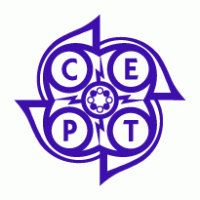 A preliminary CEPT position was agreed upon for Agenda Item 1.1, which would support a new 6-meter allocation in Region 1 (Europe, Africa, the Middle East, and Northern Asia) only if the spectrum needs for the Amateur Services are justified and studies show that the incumbent land mobile, radiolocation, and broadcasting services -- including their future deployment and services in adjacent spectrum -- are protected. The 185-member PTD developed a working document summarizing the sharing studies currently available for this agenda item.
A preliminary CEPT position was agreed upon for Agenda Item 1.1, which would support a new 6-meter allocation in Region 1 (Europe, Africa, the Middle East, and Northern Asia) only if the spectrum needs for the Amateur Services are justified and studies show that the incumbent land mobile, radiolocation, and broadcasting services -- including their future deployment and services in adjacent spectrum -- are protected. The 185-member PTD developed a working document summarizing the sharing studies currently available for this agenda item..jpg) As the ITU explained in its August 2016 report, "Applications of wireless power transmission via radio frequency beam," "WPT technology is considered as one of [the] game-changing technologies. We will be able to become free from lacking electric power when electric power will be supplied wirelessly." Spectrum employed in WPT depends in part on its application; vehicle applications typically use frequencies in the LF and MF range.
As the ITU explained in its August 2016 report, "Applications of wireless power transmission via radio frequency beam," "WPT technology is considered as one of [the] game-changing technologies. We will be able to become free from lacking electric power when electric power will be supplied wirelessly." Spectrum employed in WPT depends in part on its application; vehicle applications typically use frequencies in the LF and MF range..jpg) Sponsored by
Sponsored by 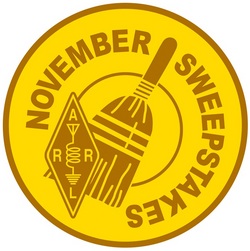 Order mugs and pins separately. In either case, if you submitted your log electronically, accompany your check for payment with a paper copy of the first page of your Cabrillo log, indicating how many mugs or pins you are ordering. If you logged on paper, accompany your check for payment with a note to the top of your summary sheet, indicating how many mugs or pins you are ordering.
Order mugs and pins separately. In either case, if you submitted your log electronically, accompany your check for payment with a paper copy of the first page of your Cabrillo log, indicating how many mugs or pins you are ordering. If you logged on paper, accompany your check for payment with a note to the top of your summary sheet, indicating how many mugs or pins you are ordering.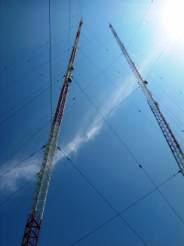 "This event is being undertaken because of the continuing, worldwide interest in 630-meter activities," said ARRL 630-Meter Experiment Coordinator Fritz Raab, W1FR, in announcing the event. He said US radio amateurs are looking forward to gaining access to the new 472-479 kHz band, while Canadians are eager to learn more about the present level of amateur activity on their newest ham band.
"This event is being undertaken because of the continuing, worldwide interest in 630-meter activities," said ARRL 630-Meter Experiment Coordinator Fritz Raab, W1FR, in announcing the event. He said US radio amateurs are looking forward to gaining access to the new 472-479 kHz band, while Canadians are eager to learn more about the present level of amateur activity on their newest ham band.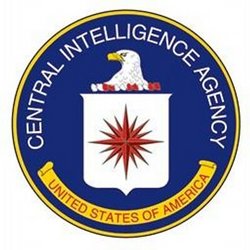 For example, a 1949 memo largely dismissed the use of Amateur Radio in the Soviet Bloc as an intelligence-gathering tool. "Except for possibilities in the counter-espionage field, it is believed that exploitation of amateurs with reference to the USSR and satellites could lead at best only to information concerning the location of ham transmitters, an item of dubious intelligence value," said the memo, which carried the subject line "Exploitation of Radio Amateurs." Another memo from the same year showed that the USSR viewed the growing "cadre" of radio amateurs as the next generation of engineers.
For example, a 1949 memo largely dismissed the use of Amateur Radio in the Soviet Bloc as an intelligence-gathering tool. "Except for possibilities in the counter-espionage field, it is believed that exploitation of amateurs with reference to the USSR and satellites could lead at best only to information concerning the location of ham transmitters, an item of dubious intelligence value," said the memo, which carried the subject line "Exploitation of Radio Amateurs." Another memo from the same year showed that the USSR viewed the growing "cadre" of radio amateurs as the next generation of engineers..jpg) "HFsat will be gravity gradient-stabilized by its full-sized 10-meter half-wave HF dipole with tip masses," Bruninga explained on the HFsat web page. "HFsat will continue the long tradition of small amateur satellites designed by aerospace students at the US Naval Academy."
"HFsat will be gravity gradient-stabilized by its full-sized 10-meter half-wave HF dipole with tip masses," Bruninga explained on the HFsat web page. "HFsat will continue the long tradition of small amateur satellites designed by aerospace students at the US Naval Academy."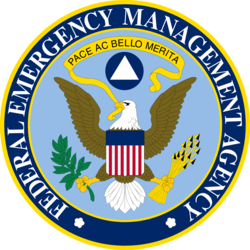 Laura Goudreau, KG7BQR, Regional Emergency Communications Coordinator for FEMA Region X, said the January 18 exercise attracted 56 check-ins, 47 of them Amateur Radio stations. Also checking in were six Army and two Air Force MARS stations, three SHARES stations, and one FEMA station.
Laura Goudreau, KG7BQR, Regional Emergency Communications Coordinator for FEMA Region X, said the January 18 exercise attracted 56 check-ins, 47 of them Amateur Radio stations. Also checking in were six Army and two Air Force MARS stations, three SHARES stations, and one FEMA station. The 32nd annual DX Dinner, sponsored by the SouthWest Ohio DX Association (
The 32nd annual DX Dinner, sponsored by the SouthWest Ohio DX Association (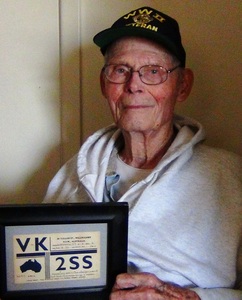
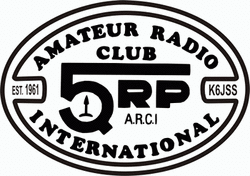 QRP ARCI Four Days in May Event Registration Open:
QRP ARCI Four Days in May Event Registration Open: 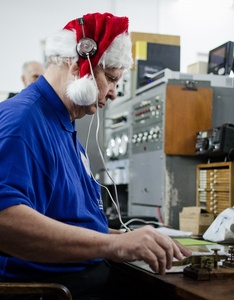 Sweden's SAQ Alexanderson Alternator Station Reports "Successful" Christmas Transmission: The old Alexanderson alternator SAQ at World Heritage Grimeton Radio Station in Sweden was heard by more than 400 listeners on December 24, 2016, setting a new record. SAQ traditionally broadcasts at Christmas with the 1920s-era electro-mechanical transmitter that operates on 17.2 kHz. SAQ has released a
Sweden's SAQ Alexanderson Alternator Station Reports "Successful" Christmas Transmission: The old Alexanderson alternator SAQ at World Heritage Grimeton Radio Station in Sweden was heard by more than 400 listeners on December 24, 2016, setting a new record. SAQ traditionally broadcasts at Christmas with the 1920s-era electro-mechanical transmitter that operates on 17.2 kHz. SAQ has released a  UK Regulator Ofcom No Longer Listing Unassigned Amateur Radio Call Signs: UK Telecommunications regulator Ofcom no longer issues lists of unassigned -- or unallocated -- UK Amateur Radio call signs. This practice ended last fall. Replying to an inquiry, Ofcom's Julia Snape explained, "We do not hold a list of call signs that are available. Due to a system change, the assignment of call signs is now done using an algorithm rather than 'grabbing' from a list." A
UK Regulator Ofcom No Longer Listing Unassigned Amateur Radio Call Signs: UK Telecommunications regulator Ofcom no longer issues lists of unassigned -- or unallocated -- UK Amateur Radio call signs. This practice ended last fall. Replying to an inquiry, Ofcom's Julia Snape explained, "We do not hold a list of call signs that are available. Due to a system change, the assignment of call signs is now done using an algorithm rather than 'grabbing' from a list." A 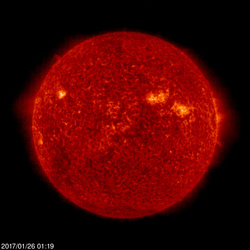 Predicted solar flux is 85 on January 26-29; 82 on January 30-February 2; 75 on February 3-7; 76 on February 8; 77 on February 9-12; 78, 79, and 81 on February 13-15; 83 on February 16-18; 85, 83, and 82 on February 19-21; 80 on February 22-24; 78 on February 25; 77 on February 26-27; 76 on February 29-March 1; 75 on March 2-6, and 76 on March 7.
Predicted solar flux is 85 on January 26-29; 82 on January 30-February 2; 75 on February 3-7; 76 on February 8; 77 on February 9-12; 78, 79, and 81 on February 13-15; 83 on February 16-18; 85, 83, and 82 on February 19-21; 80 on February 22-24; 78 on February 25; 77 on February 26-27; 76 on February 29-March 1; 75 on March 2-6, and 76 on March 7.








